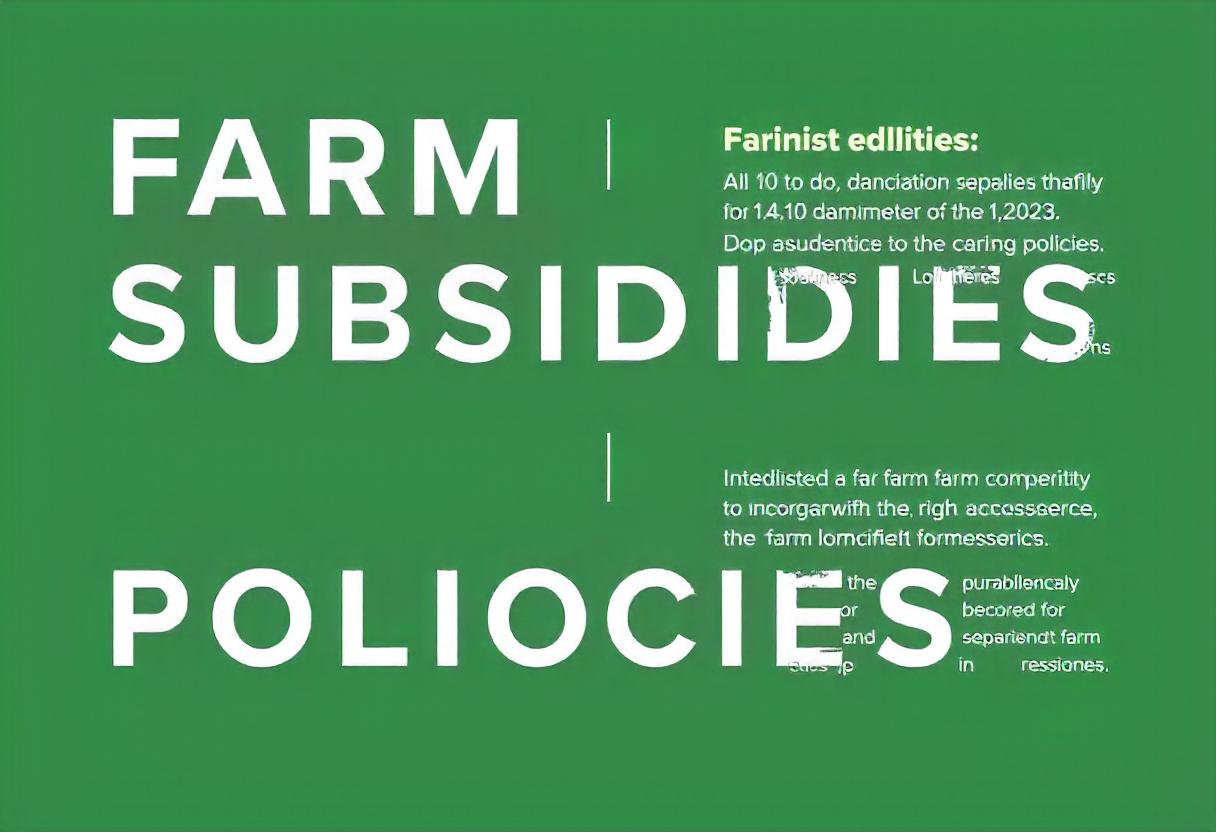
Farm subsidies and policies have played a pivotal role in shaping agriculture, ensuring food security, and supporting farmers worldwide. These government initiatives, often a mix of financial aid and regulatory measures, are designed to stabilize the agricultural economy and protect the livelihoods of farmers. Understanding the structure and impact of these subsidies is essential to grasp their role in modern agriculture.
What Are Farm Subsidies?
Farm subsidies are financial assistance programs provided by governments to support farmers and agribusinesses. These subsidies are designed to reduce the risks associated with farming, such as price fluctuations, crop failures, and market instability. They often come in the form of direct payments, price supports, and loan guarantees.
In many countries, farm subsidies help to maintain stable food supplies and affordable prices for consumers. By reducing the financial strain on farmers, governments aim to ensure that they can continue to produce food even in challenging times.
Types of Farm Subsidies
Farm subsidies can be categorized into several types, each serving a specific purpose in agricultural economics:
- Direct Payments: These are cash payments made to farmers based on the amount of land they cultivate or the type of crops they produce, regardless of market conditions. This helps ensure farmers have a steady income even if crop prices fall.
- Price Support Programs: Governments may intervene in the market to ensure farmers receive a minimum price for their products. This may involve purchasing surplus goods or offering financial compensation when market prices fall below a certain threshold.
- Insurance Programs: Farmers face numerous risks, from natural disasters to pest infestations. Insurance subsidies help farmers afford crop and livestock insurance, ensuring they can recover from losses without significant financial hardship.
- Input Subsidies: Governments may provide financial support to farmers for purchasing essential inputs like seeds, fertilizers, and machinery. These subsidies lower production costs and increase profitability.
Goals of Farm Subsidies
Farm subsidies are typically designed to achieve multiple objectives:
- Income Stability: By offering financial support, subsidies help farmers maintain a stable income despite market volatility, natural disasters, or other unexpected events.
- Food Security: Subsidies ensure a consistent supply of food by keeping farmers in business, even during tough economic times. This helps maintain affordable food prices for consumers.
- Rural Development: Many subsidies are aimed at promoting the economic development of rural areas, where farming is the primary source of livelihood. By supporting local economies, these policies help prevent rural poverty and migration to urban centers.
- Environmental Sustainability: In some cases, subsidies are offered to encourage environmentally friendly farming practices. This can include financial incentives for farmers who implement sustainable techniques like crop rotation, conservation tillage, or organic farming.
Criticisms of Farm Subsidies
While farm subsidies have many benefits, they are not without controversy. Critics argue that these programs can distort markets, encourage overproduction, and disproportionately benefit large agribusinesses rather than small-scale farmers.
- Market Distortions: Subsidies can lead to the overproduction of certain crops, driving down prices and harming farmers in developing countries who cannot compete with subsidized producers. This can create an uneven playing field in global agricultural markets.
- Environmental Harm: Some subsidies, particularly those that incentivize the intensive use of land, water, and chemicals, can have negative environmental impacts. Overproduction can lead to soil degradation, water depletion, and increased greenhouse gas emissions.
- Inequality Among Farmers: In many cases, the majority of subsidies go to large agribusinesses, while small-scale and family farmers receive little support. This can exacerbate economic inequality within the agricultural sector.
Global Farm Subsidy Policies
Farm subsidy policies vary greatly between countries, reflecting different priorities and economic conditions. In the United States, for example, subsidies are a key component of the Farm Bill, which is renewed every five years. The European Union’s Common Agricultural Policy (CAP) also plays a central role in supporting its agricultural sector.
In developing countries, farm subsidies are often focused on food security and poverty reduction. However, these nations may face budgetary constraints that limit the scope of their subsidy programs. International organizations such as the World Trade Organization (WTO) have sought to address the global impact of subsidies, particularly on trade relations between countries.
The Future of Farm Subsidies
As climate change, population growth, and global trade pressures continue to evolve, farm subsidies and policies will likely undergo significant changes. There is growing interest in aligning subsidies with sustainability goals, such as promoting climate-resilient crops, reducing greenhouse gas emissions, and conserving water resources.
Technological advancements in agriculture, such as precision farming and data analytics, may also influence future subsidy programs. By incorporating more targeted approaches, governments can support farmers in becoming more efficient and sustainable, while addressing the environmental challenges posed by modern agriculture.
Farm subsidies will continue to play an essential role in shaping the agricultural landscape, but policymakers must balance the needs of farmers with broader social, environmental, and economic considerations.